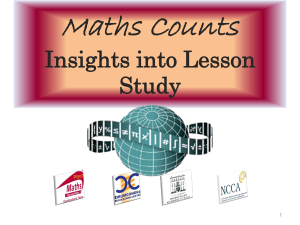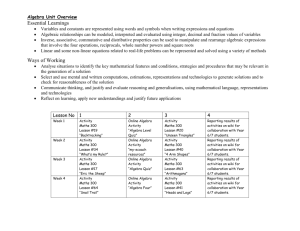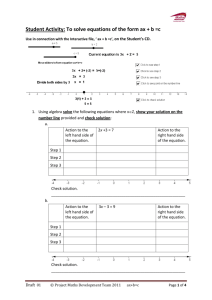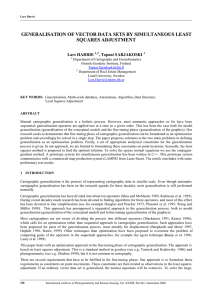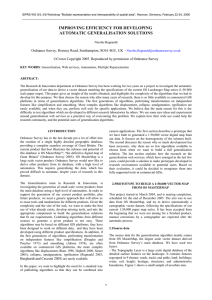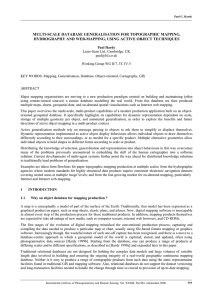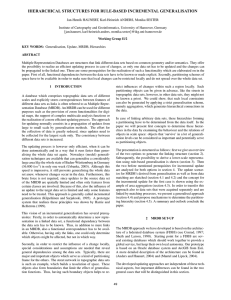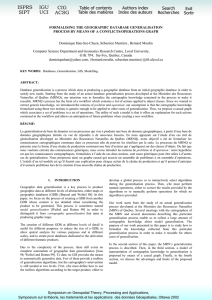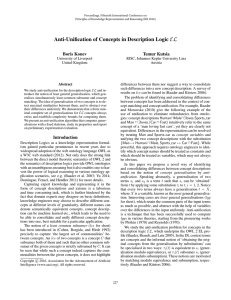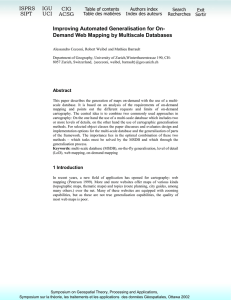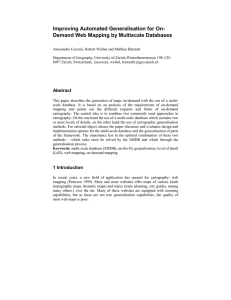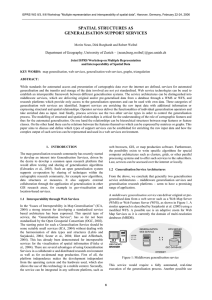Using BYOD to enhance student achievement
advertisement
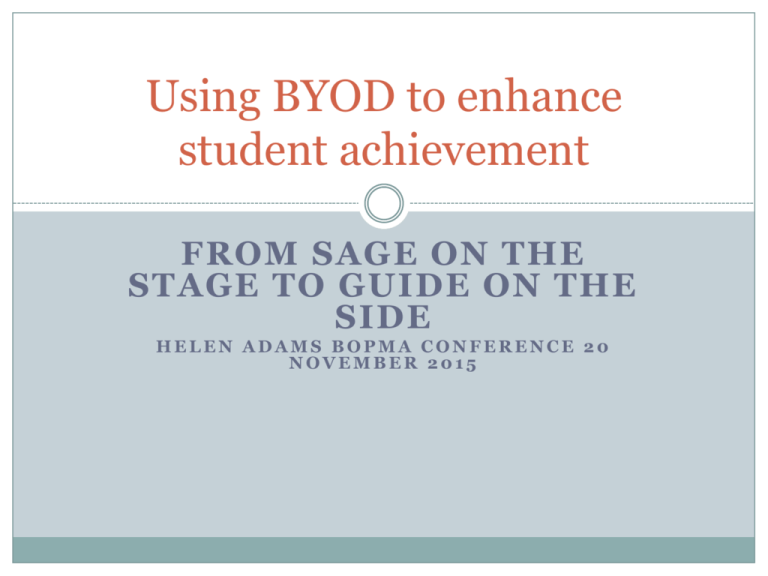
Using BYOD to enhance student achievement FROM SAGE ON THE STAGE TO GUIDE ON THE SIDE HELEN ADAMS BOPMA CONFERENCE 20 NOVEMBER 2015 Algebra – the generalisation of number 47 x 36 x 30 6 40 7 Algebra – the generalisation of number 47 x 43 x 40 3 40 402 3.40 7 7.40 3.7 = 21 Algebra – the generalisation of number 47 x 43 = 402 + 3.40 + 7.40 + 21 402 + 10.40 + 21 35 x 39 Algebra – the generalisation of number 47 x 43 Replace 40 with x (ie let x = 40) x x 3 x 7 Algebra – the generalisation of number What are we doing numerically when we expand (x+7)(x + 3)? x x 7 x 3 x2 3x 7x 21 x2 + 3x + 7x + 21 x2 + 10x + 21 Algebra – the generalisation of number What are we doing numerically when we simplify algebraic expressions? Can you give a numerical example that illustrates the expansion of (a2b3)2 https://www.youtube.com/channel/UCOfTtKYyp3g _N_7Z7bVEfSg Learning styles Show me boards (whole class activity) explain everything video (independent / individual activity) Maths and computers Logo - turtle Spreadsheets Powerpoint presentations Graphics calculators (CAS) Algebraic manipulators Autograph wikispace Geogebra Mathsonline Mathletics Moodle Maths buddy Maths apps The Problems As a teacher As a head of faculty 1. How to differentiate the teaching and learning of key skills 2. How to make time for students to practice being mathematicians (rich tasks) 3. How to support teachers of Mathematics to become more effective and to provide a uniform quality of Maths education across the school Differentiation 3 different worksheets Extension questions Streaming Setting Formative assessment Individualised programmes which best meet the needs of all students at all times – students gaining the key skills and concepts and adding to their mathematical ‘tool kit’ Students work independently Motivation Extrinsic Carrot and Stick (20th century) – works for simple tasks Intrinsic Autonomy Acknowledgement Progress Mastery Purpose http://www.ted.com/talks/dan_pink_on_motiv ation?language=en https://www.ted.com/talks/dan_ariely_what_ makes_us_feel_good_about_our_work?languag e=en On-line learning environment Reliable wireless internet connection at school (and at home) One-to-one devices (any) Learning platform e.g. google classroom Sockets/headphones/spare devices The lesson Web sites Khan Academy Khan Academy mymaths.co.uk Mymaths on-line homework Motivation? Autonomy Progress Mastery Explain Everything Explain Everything explain everything Motivation? Autonomy (creativity) Where can this lesson be found and how is work submitted? google classroom Motivation? Acknowledgement – individualised feedback and feed forward, just in time Progress Purpose – sharing excellent explanations with others Google data How does the physical lesson work? Go into the google classroom See if any work has been returned and resubmit if necessary Decide on your learning intention Decide how to find out about this topic When you feel confident of the concept try to explain everything Upload your work to the google classroom The google classroom Early thoughts Did the method increase differentiation? Did the on-line learning improve achievement? Did the method free up more time for students to work on solving the real life / rich problems? I learnt a great deal about how the student works / thinks , very quickly Some students found it too difficult to get started – too much autonomy Some students were going straight to the ‘explain everything’ questions and trying to answer them with no knowledge Some students got too distracted by other websites Many students chose to listen to music whilst working I missed being the sage on the stage Early solutions (1) ISSUE SOLUTION Some students found it MathsX too difficult to get started – too much autonomy mathsx What happened next? Students and teachers from other year 10 classes joined the MathsX classroom Other teachers used the explain everything videos and worksheets with their classes The teachers were learning how to teach the topic 3. How to support teachers of Mathematics to become more effective and ensure a uniform quality of learning across the school Early solutions (2) ISSUE Some students were going straight to the ‘explain everything’ questions and trying to answer them with no knowledge SOLUTION Students need to be taught how to learn Early solutions (3) ISSUES Some students got too distracted by other websites Many students chose to listen to music whilst working SOLUTIONS These are modern day issues. Students need to be taught the appropriate use of technology Early solutions (4) ISSUE I missed being the sage on the stage SOLUTION In student feedback surveys many students prefer being taught at the board. Easier! Less effort on their part! Authentic learning? The lesson is designed for the mid-range students. The students have been exposed to this kind of learning for their whole learning life, they are accustomed to it. Other benefits Students who are absent from class can catch up more easily Students can easily revise topics from previous years Courses can be adapted to individuals’ needs Multi-course and multi-level courses can run in the same classroom Works well in the ‘learning commons’ set up All students can benefit from being taught by the expert teacher For the future … BIG PICTURE Learning how to learn (21st century) Teacher networks eg. Statistics Learning Centre / mathsnz http://students.mathsnz.com/ncea-level3/3-14-distributions/part-7-the-binomialdistribution nrich http://nrich.maths.org/ Management of technology LITTLE PICTURE Start with a ‘do now’ to check in with ALL students Flip classroom (Purpose) Final thoughts You can’t learn how to teach maths without teaching maths How much intrinsic motivation exists???? The 80:20 rule Who are we doing this for? Quote from Haim Ginott Haim Ginott – Between Parent and Child
